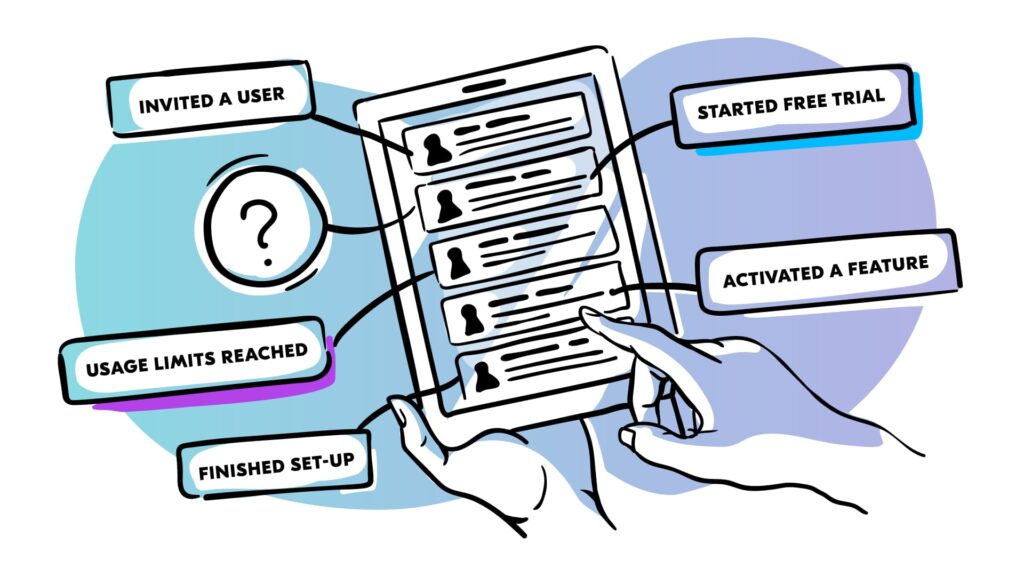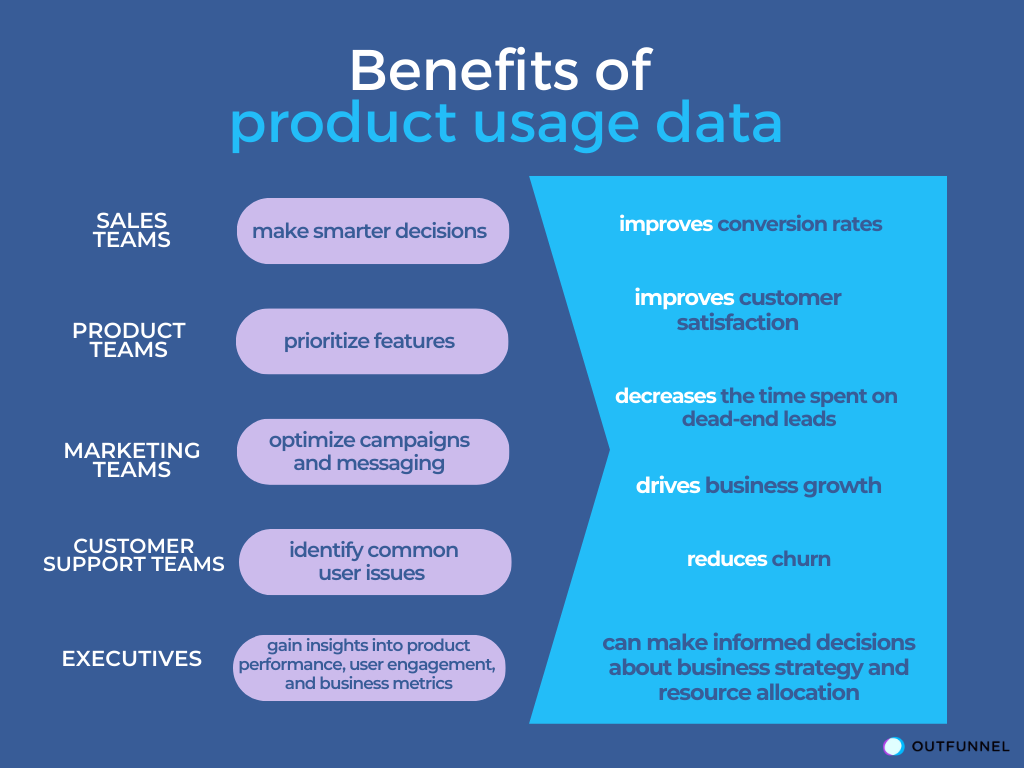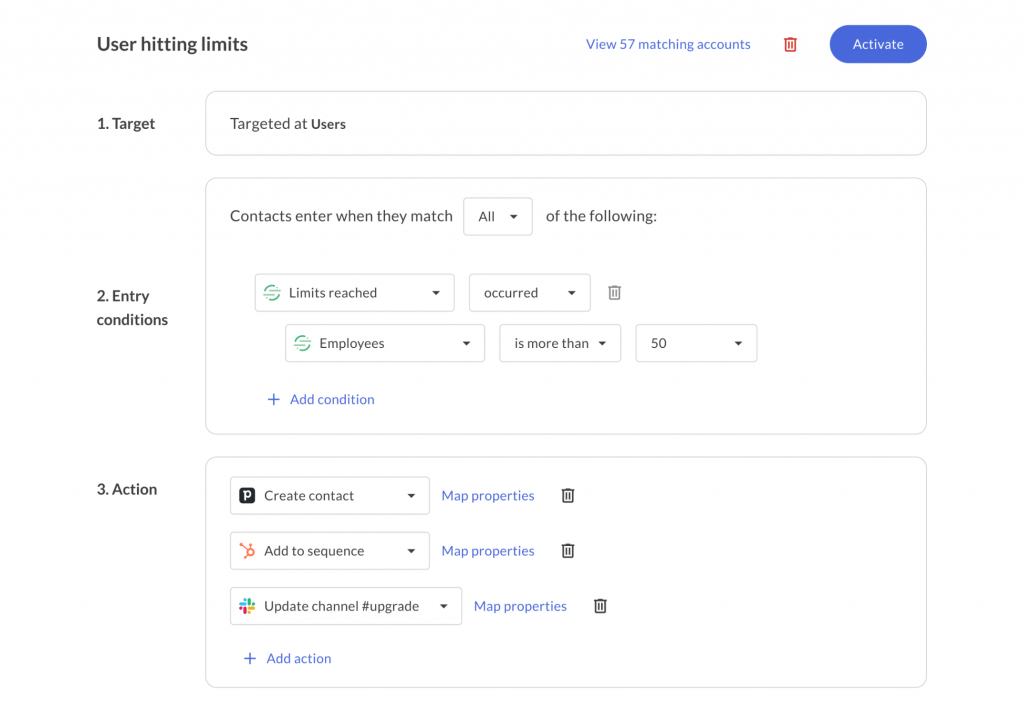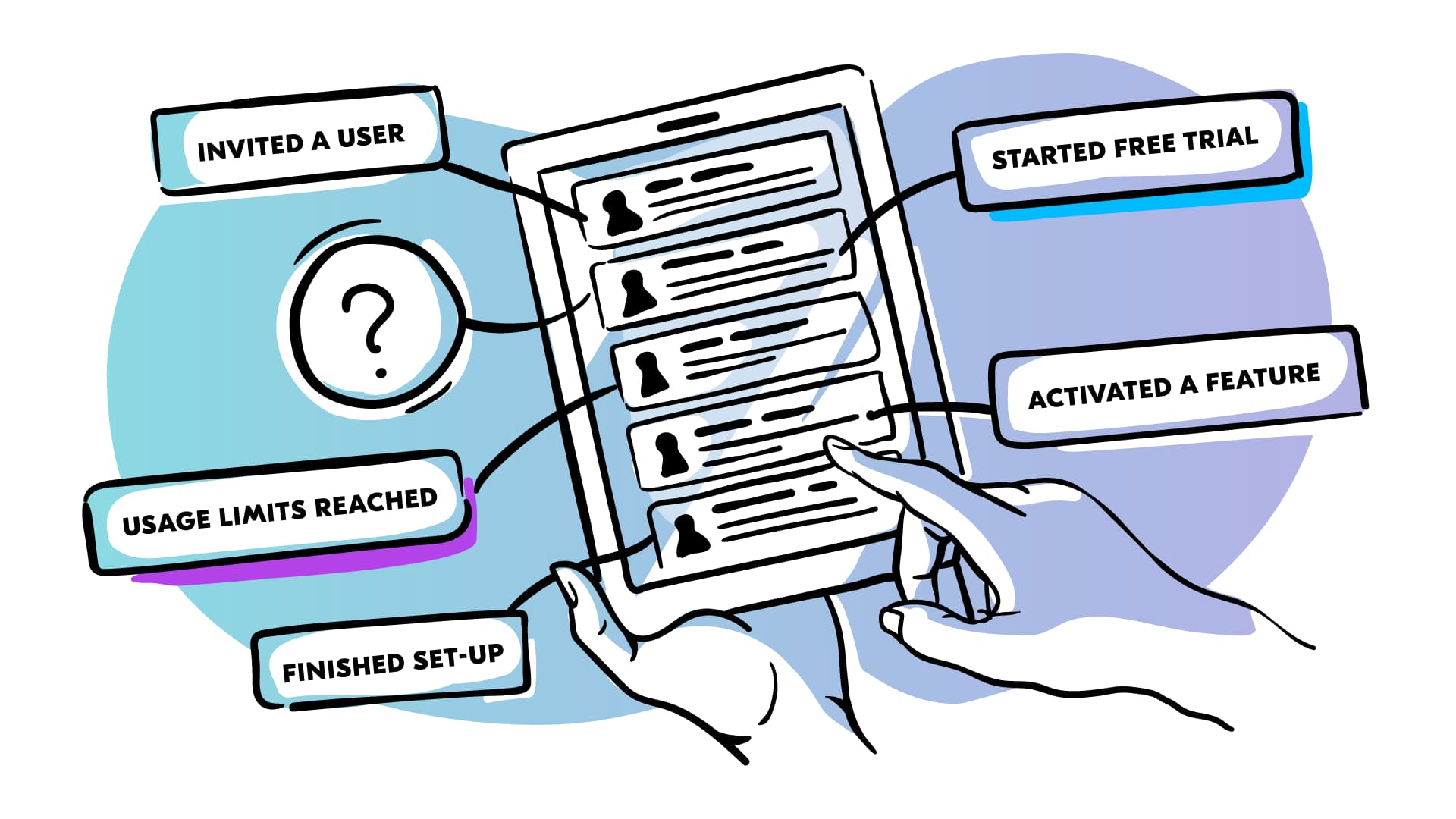When you think about data, what comes to your mind?
For us, it’s a great way to optimize business operations and make informed decisions. For example, taking advantage of data saved 80% of the time needed for onboarding new users for us at Outfunnel.
Imagine what you could do by gathering and analyzing product usage data. Gathering insights of your customer’s behavior and preferences can in turn help optimize your sales process to a new level.
In this article, we’ll explore how exactly product usage data can be used to improve your sales process and drive growth for your business.
“Product usage data is the voice of your customers. Listen carefully and you will know what they want.”
Dan Olsen, the author of “The Lean Product Playbook”
TOPICS WE’LL COVER
Product usage definition
Product usage data refers to the information that is collected and analyzed about how customers interact with a product. It includes data on how often the product is used, which features are the most popular, how long customers spend using the product, and how they navigate through it.
Product usage data is valuable for understanding customer behavior and preferences, identifying areas for improvement or optimization, and informing product development decisions. It can be collected through various methods, such as analytics tools, user surveys, and customer feedback.
Importantly, product-led growth cannot exist without product usage data. That’s because a product-led sales team makes decisions based on product usage data instead of relying on traditional sales techniques like cold outreach. They contact only the leads that have the most potential to convert. This can lead to a 30% uplift in lead-to-win conversion rates.
If you’re not using data to inform your product decisions, you’re flying blind.”
Hiten Shah, CEO of Nira
What are product usage metrics?
Product usage metrics show if and how many times your features have been used.
Some common product usage metrics include:
- Active Users: The number of unique users who have engaged with the product or a specific feature within a certain time period.
- Time Spent: The amount of time users spend using the product or a specific feature.
- Retention Rate: The percentage of users who return to the product within a specific time period.
- Session Length: The length of time that users spend in a single session with the product or a feature.
- Conversion Rate: The percentage of users who complete a desired action, such as making a purchase or signing up for a subscription.
- Churn Rate: The rate at which users stop using the product over time.
- User Satisfaction: The level of satisfaction users have with the product, often measured through surveys or feedback forms.
For SaaS businesses, the most important product usage metrics are the ones that show data about feature usage, which helps to understand where customers see the value and what they don’t understand or need yet. These metrics are valuable information for any team.

For example, sales can decide which leads are more likely to purchase and who is ready for an upsell. Product development teams can gain insights into user behavior and identify areas of improvement to enhance the user experience and drive product growth.
“Product usage data is the most powerful tool for understanding your users and creating a product that meets their needs.”
Nir Eyal, the author of “Hooked: How to Build Habit-Forming Products”
How to track product usage data?
Tracking product usage data involves collecting and analyzing data about how users interact with your product. Here are five steps to track product usage data:
- Identify the metrics to track: The first step is to determine what metrics are important to your business goals. This may include metrics such as user engagement, retention, conversion rate, churn rate, and revenue.
- Collect data: Once you have identified the metrics to track, you need to collect data about user behavior. This can be done using various methods, including analytics tools (like Outfunnel, Google Analytics, Mixpanel, and Amplitude), surveys, customer feedback, and user testing.
- Analyze the data: After collecting the data, you need to analyze it to gain insights into user behavior and identify patterns and trends. This may involve using statistical analysis, data visualization tools, or machine learning algorithms.
- Make data-driven decisions: Based on the insights gained from analyzing the data, you can make data-driven decisions about product development, marketing, and business strategy. This may involve optimizing product features, improving the user experience, or targeting specific user segments.
- Continuously track and optimize: Product usage data is not a one-time analysis but an ongoing process. Continuously track and analyze the data to optimize your product and stay ahead of changing user needs and preferences.
There are many tools available to help track product usage data, including the analytics platforms mentioned above. These tools can provide valuable insights into user behavior, engagement, and retention and help you make informed decisions about product development and business strategy.
If you want to see the full context of your product usage right inside your CRM and trigger the right workflows based on it, look no further because Outfunnel Product-Led Sales Platform does it for you. Try free for 14 days.
Start tracking product usage data with Outfunnel
Deep integration with Pipedrive. HubSpot & Copper coming soon.
Who can benefit from product usage data?
Everyone in a company can benefit from product usage data! Let’s see how:
- Sales teams can make smarter decisions about who to contact, understand user needs, and tailor their sales pitches to specific user segments. This can improve conversion rates and decrease the time spent on dead-end leads. Get the data you need with the Outfunnel Product-led Sales Platform.
- Product teams can gain insights into how users interact with their product, which features are the most popular, and where users are dropping off. This can help them make data-driven decisions about product development and prioritize features based on user needs.
- Marketing teams can optimize their campaigns and messaging, targeting specific user segments based on their behavior and preferences. This can improve conversion rates and drive business growth.
- Customer support teams can identify common user issues and develop targeted solutions. This can improve customer satisfaction and reduce churn.
- Executives can gain insights into product performance, user engagement, and business metrics. This can help them make informed decisions about business strategy and resource allocation.
As you can see, product usage data can benefit anyone involved in product development, marketing, customer support, sales, or executive decision-making. By gaining insights into user behavior, preferences, and needs, stakeholders can optimize their strategies and improve business outcomes. Here are 10 examples of product-led growth companies with takeaways and tips from the leaders.

Elevate your product usage data to a higher level
Now that you have your product usage data, it’s time to take it to the next level by segmenting users based on their interaction with the product.
The goal of product usage segmentation is to create targeted playbooks, marketing strategies, and product offerings that meet the specific needs and preferences of each segment.
You can also use segments for initiating PLG workflows, e.g. opening deals for the most engaged users in the CRM or initiating specific email sequences for less engaged ones.

Screenshot from Outfunnel (coming soon)



